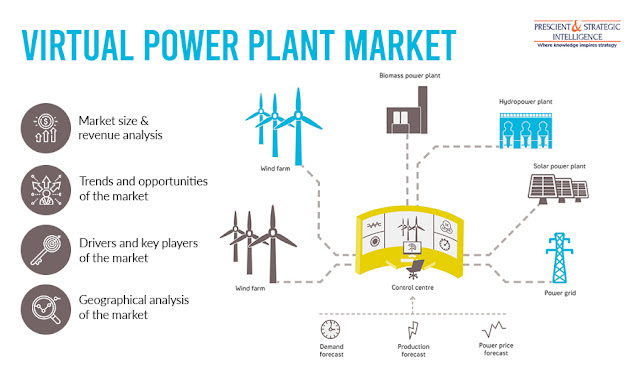
How Is Electric Vehicle Industry Fueling Virtual Power Plant Demand?
According to the International Energy Outlook 2019 published by the U.S. Energy Information Administration (EIA), renewable energy sources will generate 49% of global electricity by 2050. In the coming years, the expanding capacity of renewable power plants will augment the need for centralized infrastructure to facilitate the continuous flow of electricity. This will, therefore, accelerate the development of virtual power plants (VPPs) to integrate the newly installed renewable energy power plants with the centralized electricity distribution infrastructure.
Moreover, the soaring investments being made in the establishment of VPPs are expected to drive the virtual power plant market at a CAGR of 18.6% during the forecast period. The market revenue stood at $1,975.1 million in 2017 and it is projected to reach $5,510.2 million by 2023. For example, in 2018, Tesla Inc. announced its plan to establish a 250 MW VPP in Adelaide, South Australia. As compared to conventional energy power plants, VPPs require lesser capital for construction as well as management.
Nowadays, the expanding electric vehicle (EV) charging infrastructure, on account of rising EV sales, is resulting in the large-scale deployment of VPPs, globally. The escalating adoption of EVs, owing to the soaring concerns being raised over the pollution caused by diesel and petrol-powered vehicles, is expected to augment the need for such renewable power plants in the coming years. The International Energy Agency (IEA) estimates that at the current pace of EV production, 145 million electric cars, vans, buses, and heavy trucks will be operating across the world, by 2030.The technology segment of the virtual power plant market is categorized into mixed asset, supply side, and demand response. Among these, the demand response category accounted for the largest market share in 2017. This can be ascribed to the cost-effective development and exceptional operational performance of demand response technology-based VPPs. Owing to these advantages, North America is increasingly adopting such VPPs, to cater to the high electricity demand in the region. Of the North American countries, the U.S. will create a higher demand for such VPPs in the upcoming years.
Thus, the growing focus on non-conventional energy power plants, mounting investments being made in the establishment of VPPs, and improving EV charging infrastructure will fuel the development of VPPs in the coming years.
Source: www.psmarketresearch.com
Comments